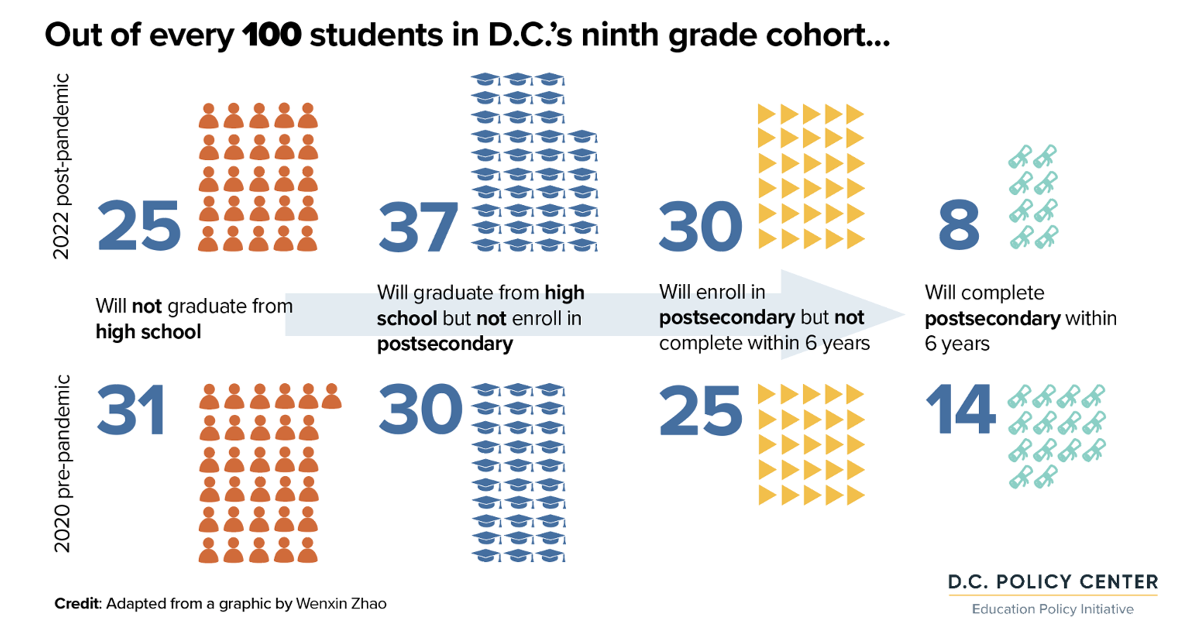On The D.C. Policy Center’s “State of D.C. Schools” Report
This week, The DC Policy Center reminded all of us once again that we are not doing enough to solve the college persistence problem for DC youth. Among the many sobering data in their State of D.C. Schools Report, I found this to perhaps be the most concerning:
We know that before the pandemic just over half of our graduating seniors began college within 6 months of leaving high school. However, more than 60% of those enrolling in postsecondary stop out before completing.
While the pandemic trends show more students are graduating from high school, a lower share is enrolling in postsecondary and 70% of students enrolling stop out before completing their degree.
It’s time we face the fact that we have a stop-out problem and it is getting worse.
To be sure, there is some good work happening at individual schools, DC CAP and DCPS Persists. However, we need to invest not only in coaching students through existing programs, but also evaluate how the structures of higher education need to change for our students to succeed.
When I read Chelsea Coffin’s original presentation of this data in June 2020, I was beginning research into innovative postsecondary models. I wanted to better understand what barriers students would identify, if asked. So, we surveyed more than 200 recent high school graduates (from DCPS and D.C. public charter schools) who had either attended and stopped-out (started college but did not complete) or never started college. Here is some of what we learned:
The top reasons students identified for stopping out:
Couldn’t afford it
Need to work to support my family financially
Worried about failing
Lost financial aid
Needed to be a caregiver for a family member
50% of stop-outs happen before the beginning of the second year of college.
On a positive note, 74% of the respondents who stopped-out reported that they had considered re-enrolling within the past year. So, we started looking for colleges and programs that could offer students a local, flexible, affordable, and supportive college experience.
Read more here about why we landed with ASU Local.
To be sure, there are lots of ways that students fall out of the pathway to a 4-year degree and no one program will be a panacea. Some students want a career that doesn’t require a postsecondary degree. Others may join the Armed Services or be hired in an apprenticeship. And others are insufficiently supported and stop-out of schooling before graduating high school.
We need multiple pathways for our students to succeed and more options that are designed to address the barriers students face to ensure our students are set up to succeed and thrive.
If you are interested in learning more about the program, our survey, or any of our innovative postsecondary research, please contact me at rpohlman@cityworksdc.org.


